Home / Research Support Infrastructure
Highly advanced technology and infrastructure to support our research
• Library • Life support systems – environmental chambers, greenhouses • Molecular Biology Laboratory • Laser Microscopy and Microdissection Laboratory • Geomatics Unit • Decision-making amphitheater • Supercomputing • Ultra-freezers • Vehicle park • Classrooms, meeting rooms and auditorium.

Library
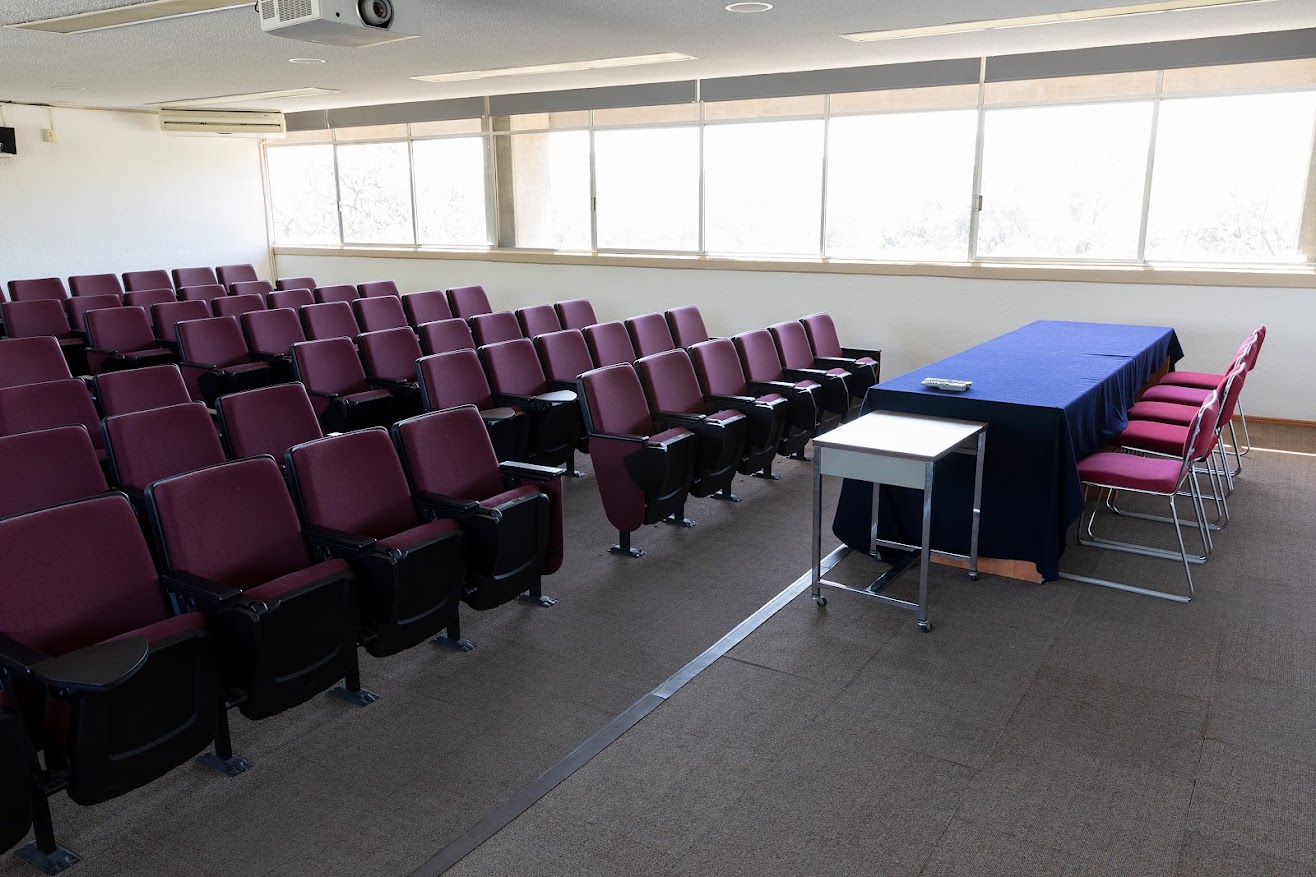
Meeting Rooms and Classrooms
Technical Support Units
Highly specialized technical personnel and infrastructure make up our research support units. In these units, our academic and student community find the equipment and technical support they need to develop experiments and obtain, analyze and disseminate data. Through them we promote collaboration and the advancement of our fundamental work: research, teaching and dissemination.
Infrastructure of our National Laboratory of Sustainability Science (LANCIS)
Decision-Making Amphitheater
- Generation of experiments and experiences related to the way of translating and communicating scientific knowledge to various social groups and agents
- Development of computational tools for the analysis, discussion and visualization of sustainability problems
- Analysis of the social learning mechanisms that have an impact on the transition towards sustainability
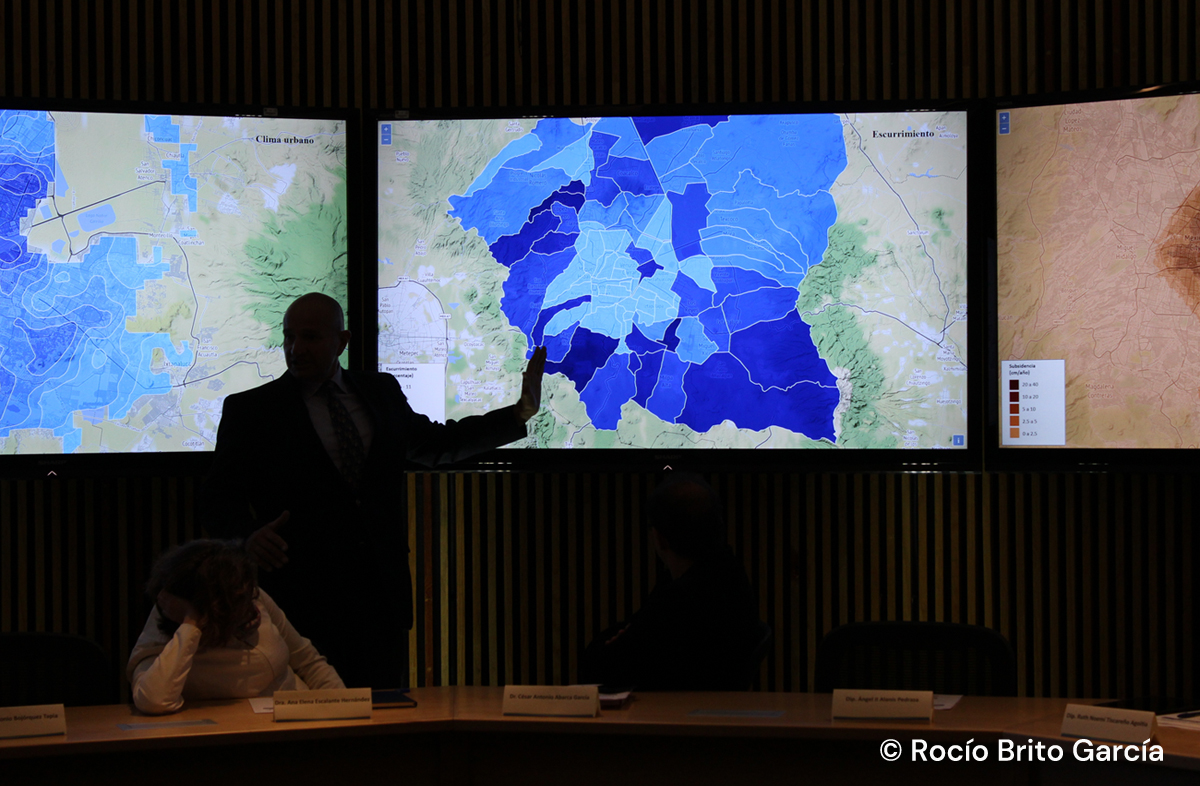
It is located on the ground floor and has capacity for 20 people. In this space we carry out:
- Facilitation meetings for decision making with geo-visualization and scientific computing tools
- Executive meetings related to Sustainability Science projects
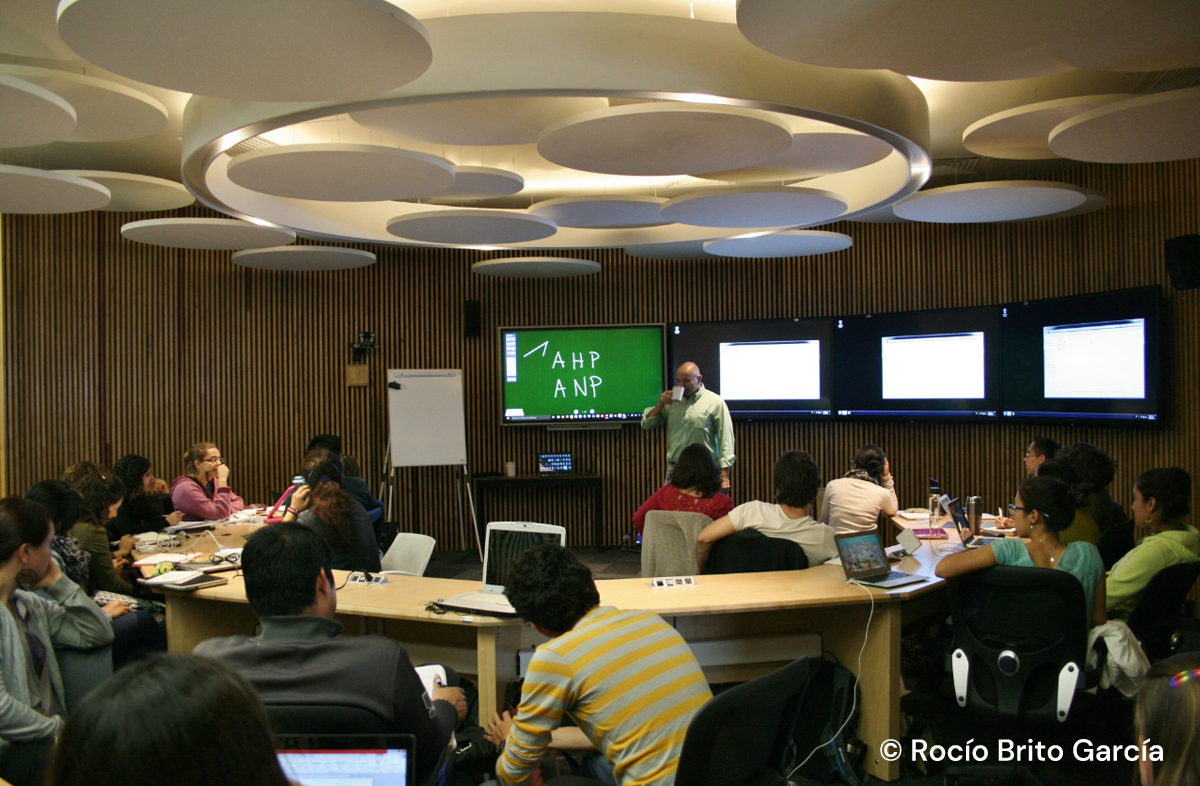
It is located on the upper floor and has capacity for 30 people. In this room we carry out:
- Collaborative planning workshops, both virtual and in person
- Distance interactions, as part of the Postgraduate Program in Sustainability Science
- Presentations of the products of different sustainability science projects
To ensure you get the dates you want, we suggest checking the availability calendar first:
To ensure you get the dates you want, we suggest checking the availability calendar first:
LANCIS-Mérida Amphitheater
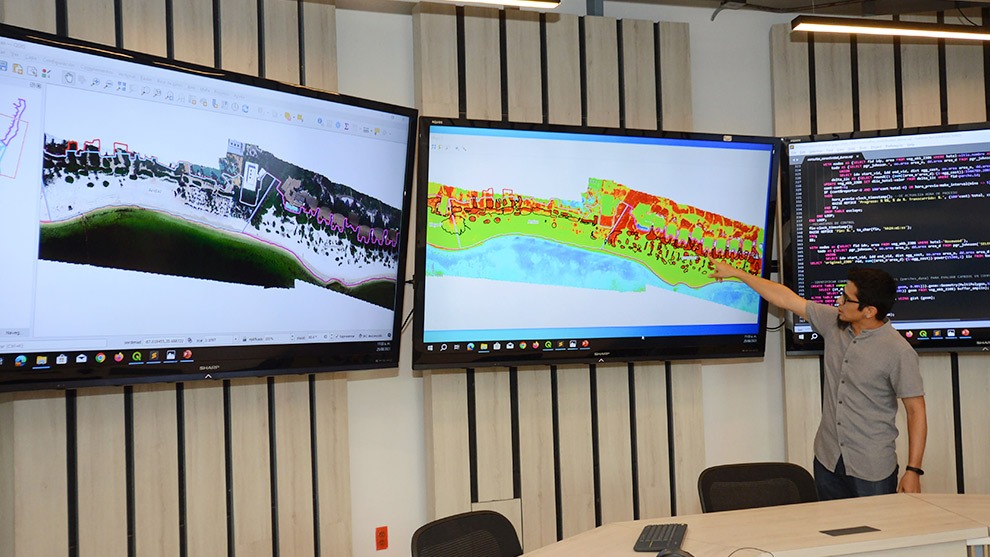
Laboratories
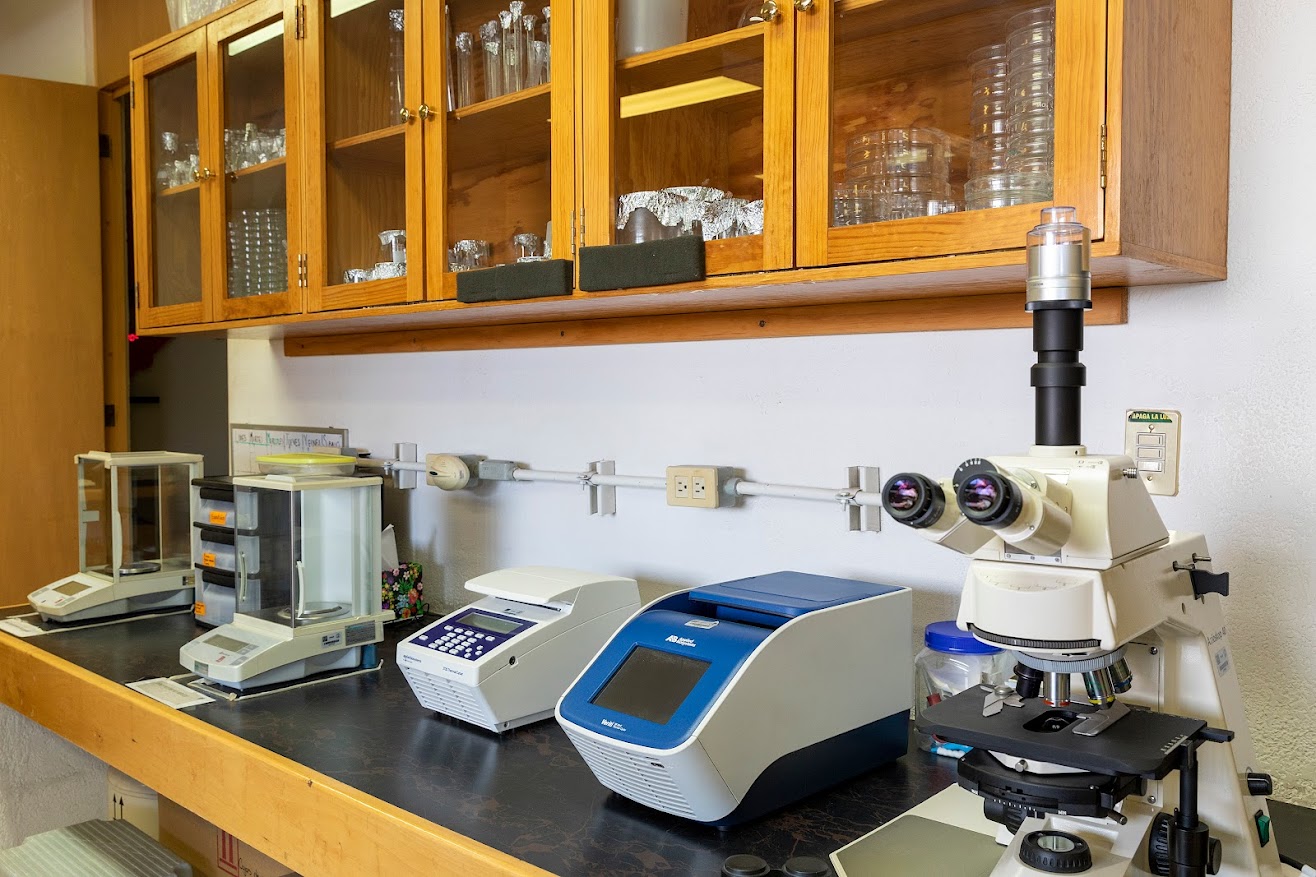
78 m² distributed in 4 laboratories equipped with water, vacuum, special gases, laboratory equipment and computing facilities, as well as 70 m² with two cubicles and a general area for students where up to two technicians, a postdoctoral fellow and 18 students can carry out activities.
The microbiology area is where analyzes of bacteria and parasitic protozoans are carried out. It complements work in the cell culture area, where infectivity experiments of viral pathogens are carried out.
In the microscopy area and the molecular biology area we have the tools for specific detection of microorganisms (viruses, bacteria and protozoans) through direct observation of specific structures marked with fluorescence or through the amplification of segments of their genome. .
In the physicochemical area we carry out determinations of organic matter and nutrients, and process parameters obtained in situ. Here we also carry out sample preparation for chromatography (analysis of organic compounds, including organochlorine pesticides, fuel derivatives, trihalomethanes and chlorination byproducts in water, among others). Additionally, and with the purpose of expanding the capacity for analysis of environmental samples, a gas chromatograph coupled to a mass-mass spectrometer has been requested from CONACYT for the determination, confirmation and quantification of a greater diversity of organic compounds.
Ecogenomics Laboratory
162 m² of area for 38 users. It has 5 cubicles for researchers and an area for interns with computing equipment, as well as 5 research laboratories with all the necessary equipment for the proper preservation of samples and for their analysis at the genetic and physicochemical level. It has LP gas, vacuum, distilled water facilities as well as special laboratory and computing equipment.
Supercomputing
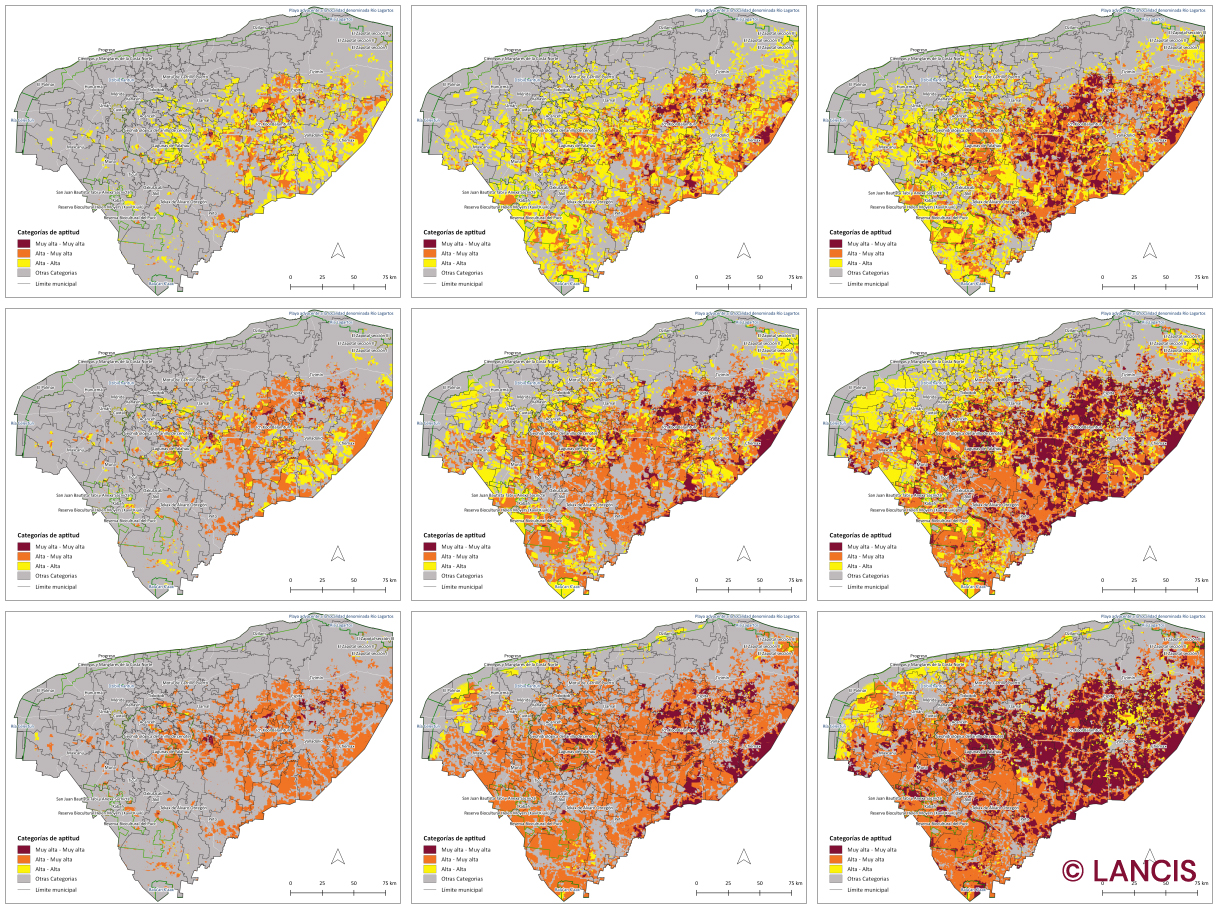
The National Laboratory of Sustainability Science has a supercomputer with nearly 900 cores and several terabytes of RAM distributed heterogeneously across 20 hosts.
It is a resource shared by researchers from the Institute of Ecology and LANCIS, as well as external researchers from organizations such as the Institute of Cellular Physiology, the Faculty of Sciences, CIBNOR, the Center for Atmospheric Sciences, the IBT and the INMEGEN.
Reglamento
The LANCIS supercomputer has the capacity to serve dozens of people at the same time. Therefore, it is necessary to observe some rules for harmonious co-use and collaboration.
Please read the supercomputer regulation (Spanish).
User Account Request
To request access to this resource, please fill out the Access Request Form.
Your application will be evaluated by the laboratory and the Institute's authorities.
Some products
-
Tellman, B. et al. (2021) ‘The role of institutional entrepreneurs and informal land transactions in Mexico City’s urban expansion’, World Development, 140, p. 105374. doi: https://doi.org/10.1016/j.worlddev.2020.105374.
-
García-Herrera, R. and García-Meneses, P. M. (2020) ‘Social Cycling: Critical Mass Through a Mobile App’, Frontiers in Sustainable Cities, 2, p. 36. doi: https://doi.org/10.3389/frsc.2020.00036.
-
Barajas, H. R. et al. (2020) ‘Testing the Two-Step Model of Plant Root Microbiome Acquisition Under Multiple Plant Species and Soil Sources’, Frontiers in Microbiology, 11, p. 542742. doi: https://doi.org/10.3389/fmicb.2020.542742.
-
Gómez-Maqueo, X. et al. (2020) ‘The seed water content as a time-independent physiological trait during germination in wild tree species such as Ceiba aesculifolia’, Scientific Reports, 10(1), p. 10429. doi: https://doi.org/10.1038/s41598-020-66759-3.
-
Gutiérrez-Guerrero, Y. T. et al. (2020) ‘Genomic consequences of dietary diversification and parallel evolution due to nectarivory in leaf-nosed bats’, GigaScience, 9(6), p. giaa059. doi: https://doi.org/10.1093/gigascience/giaa059.
-
Saldaña-Meyer, R. et al. (2019) RNA interactions with CTCF are essential for its proper function. preprint. Molecular Biology. doi: https://doi.org/10.1101/530014.
-
Andres Baeza-Castro, Luis Bojorquez, Marco Janssen, Hallie Eakin, Fidel Serrano-Candela, Paola Gomez, Yosune Miquelajauregui, Rodrigo Garcia-Herrera (2019, February 05). “Socio-hydrologicalModel_version_SESMO” (Version 1.0.0). CoMSES Computational Model Library. Retrieved from: https://www.comses.net/codebases/c9c25814-775d-435f-a8c8-017404a2130f/releases/1.0.0/.
-
Barajas, H. R. et al. (2019) ‘Global genomic similarity and core genome sequence diversity of the Streptococcus genus as a toolkit to identify closely related bacterial species in complex environments’, PeerJ, 6, p. e6233. doi: https://doi.org/10.7717/peerj.6233.
-
Barrera-Redondo, J., Ramírez-Barahona, S. and Eguiarte, L. E. (2018) ‘Rates of molecular evolution in tree ferns are associated with body size, environmental temperature, and biological productivity: MOLECULAR EVOLUTION IN TREE FERNS’, Evolution, 72(5), pp. 1050–1062. doi: https://doi.org/10.1111/evo.13475.



